
How to Use Portable 96000mAh-350W Power Station: Examples, Pinouts, and Specs
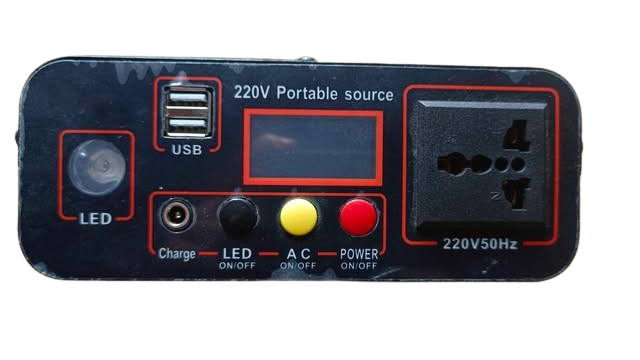
 Design with Portable 96000mAh-350W Power Station in Cirkit Designer
Design with Portable 96000mAh-350W Power Station in Cirkit DesignerIntroduction
The MIDOO Portable 96000mAh-350W Power Station is a compact and versatile power supply unit designed to provide reliable energy for a wide range of electronic devices and appliances. With a high-capacity 96000mAh battery and a maximum output of 350W, this power station is ideal for outdoor adventures, emergency backup, and mobile workstations. Its lightweight design and multiple output options make it a convenient solution for powering laptops, smartphones, small appliances, and more.
Explore Projects Built with Portable 96000mAh-350W Power Station
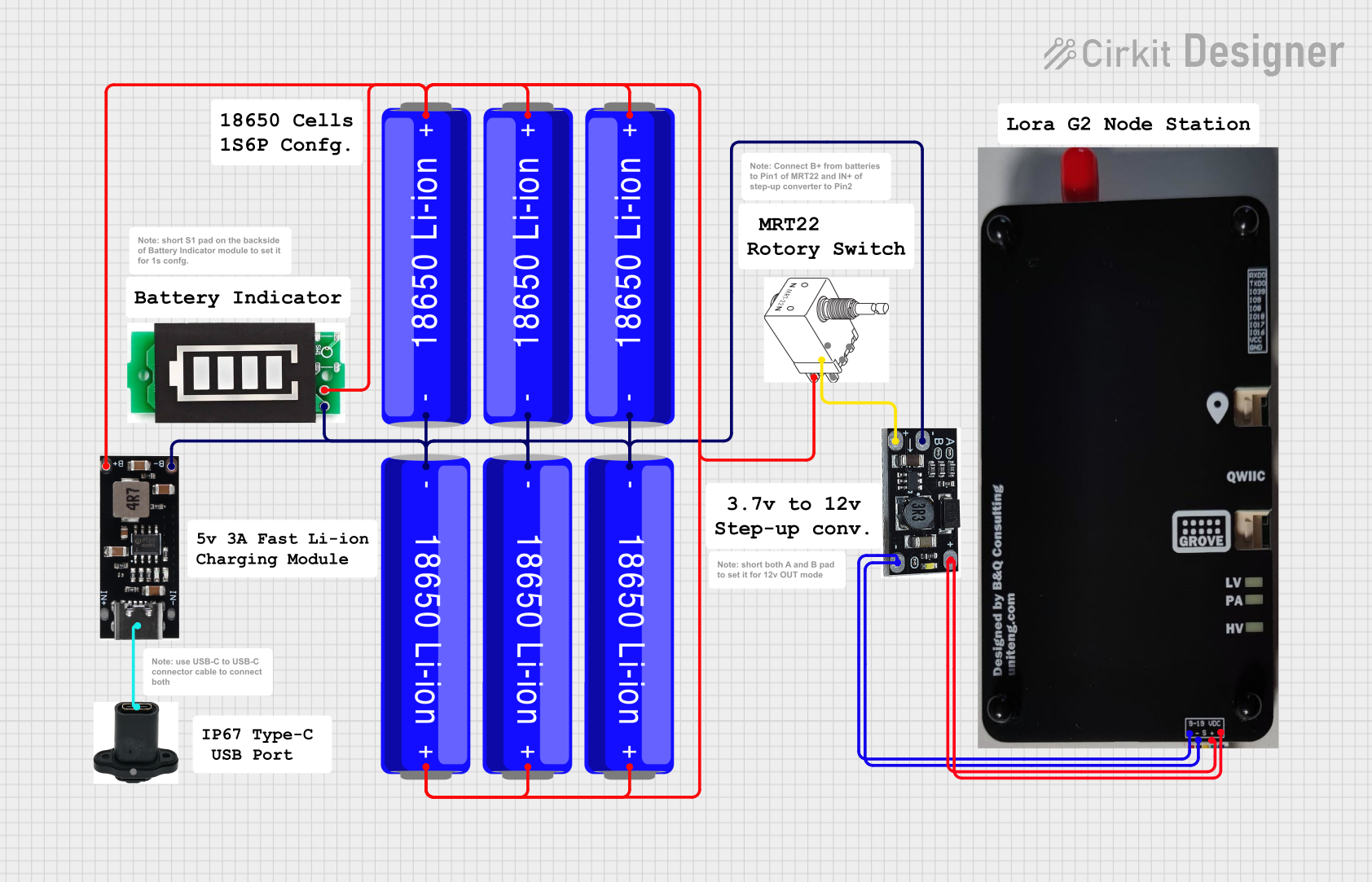
 Open Project in Cirkit Designer
Open Project in Cirkit Designer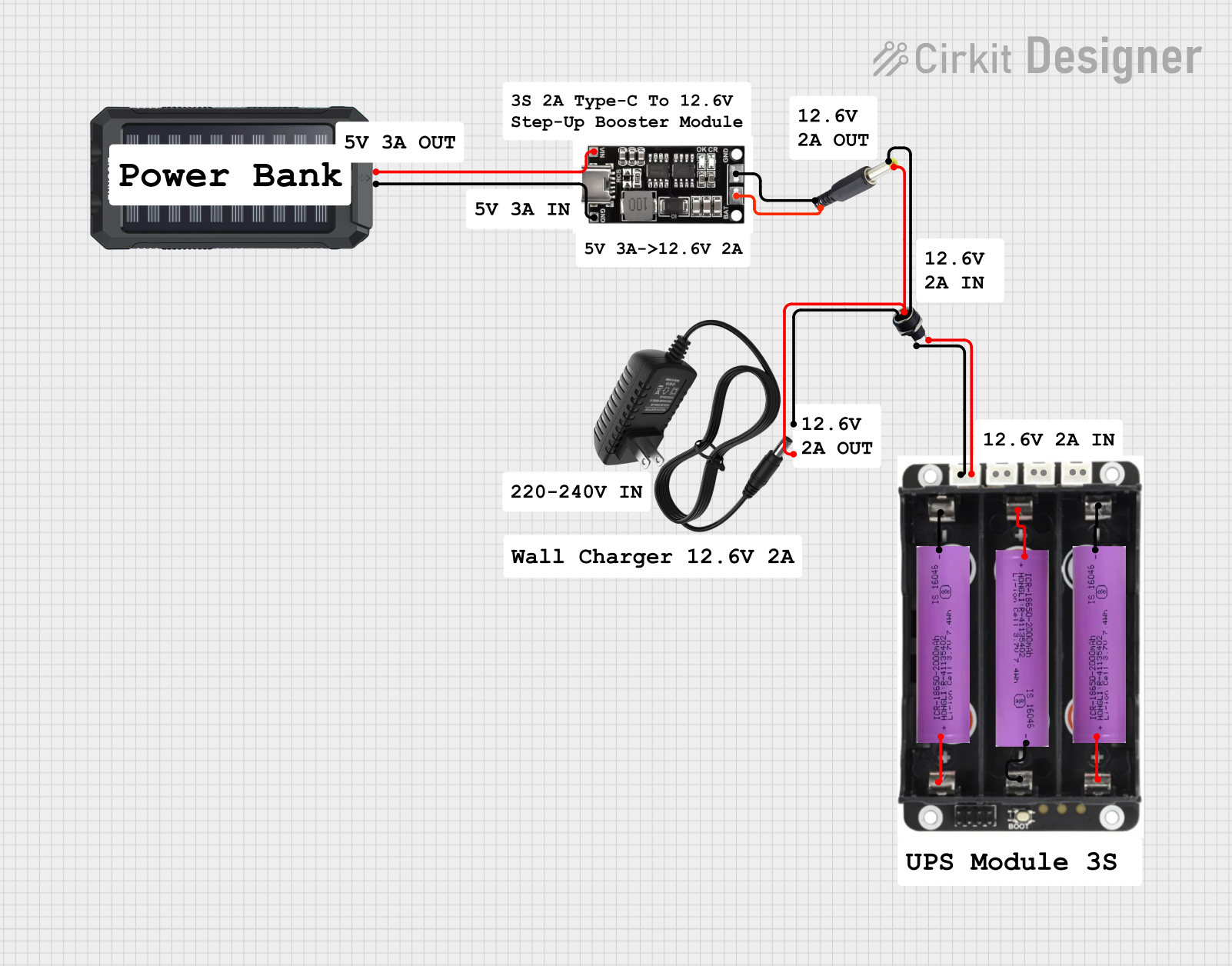
 Open Project in Cirkit Designer
Open Project in Cirkit Designer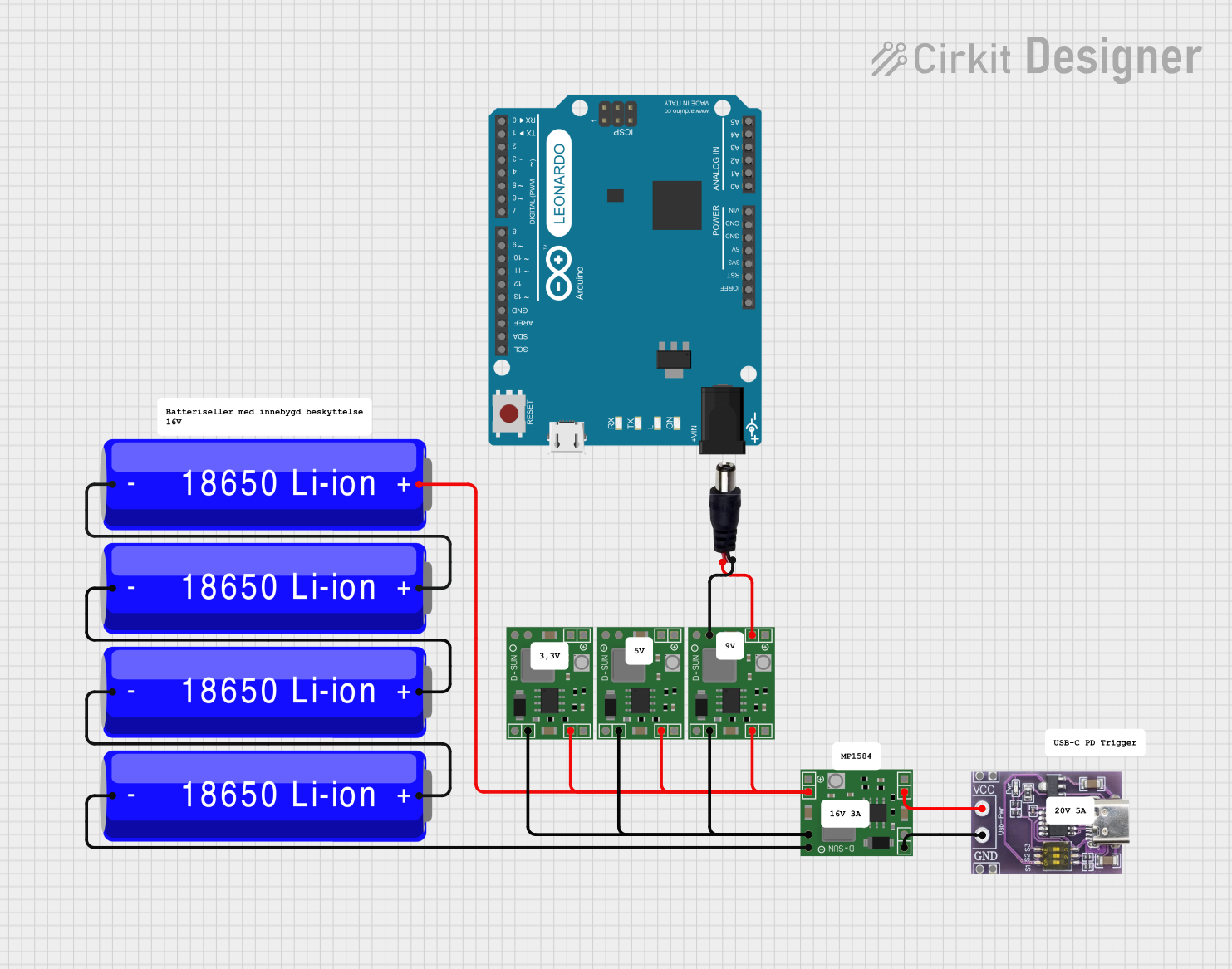
 Open Project in Cirkit Designer
Open Project in Cirkit Designer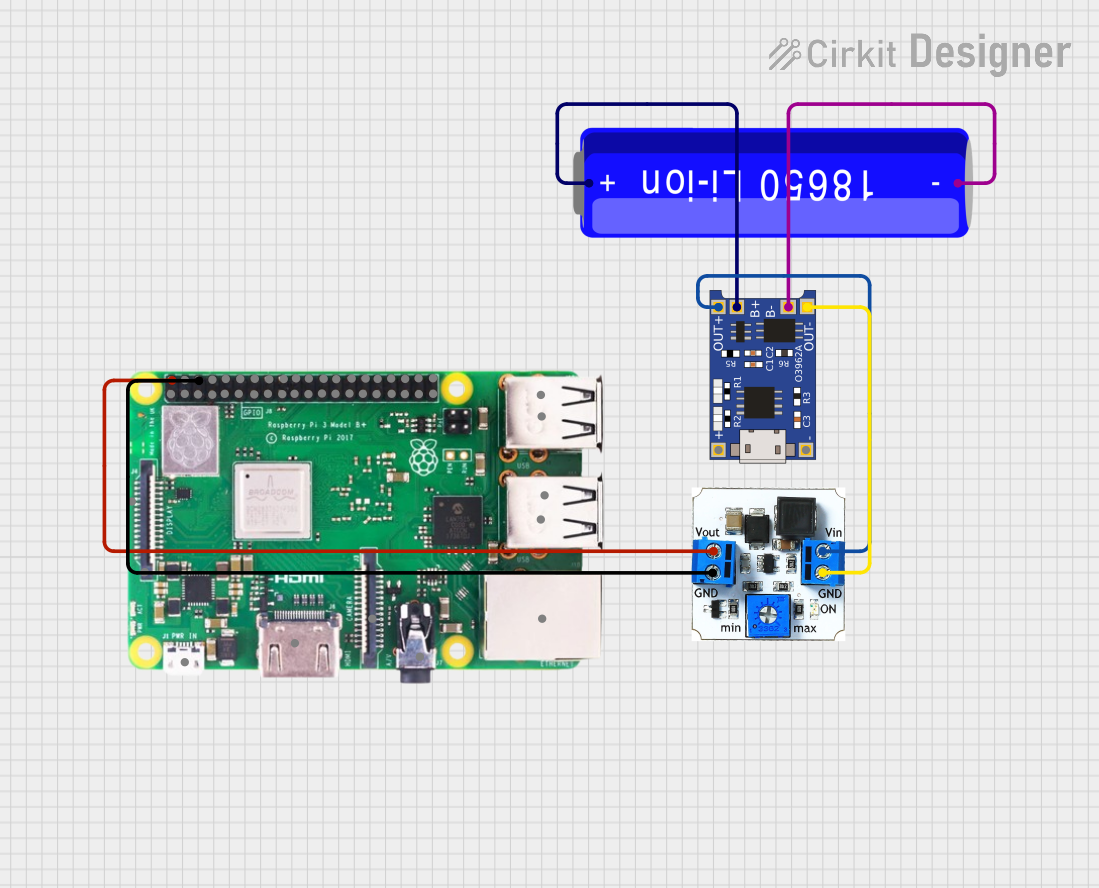
 Open Project in Cirkit Designer
Open Project in Cirkit DesignerExplore Projects Built with Portable 96000mAh-350W Power Station

 Open Project in Cirkit Designer
Open Project in Cirkit Designer
 Open Project in Cirkit Designer
Open Project in Cirkit Designer
 Open Project in Cirkit Designer
Open Project in Cirkit Designer
 Open Project in Cirkit Designer
Open Project in Cirkit DesignerCommon Applications and Use Cases
- Outdoor Activities: Camping, hiking, and road trips.
- Emergency Backup: Power outages and disaster preparedness.
- Mobile Workstations: Charging laptops, cameras, and other portable devices.
- Small Appliances: Powering mini-fridges, fans, and LED lights.
Technical Specifications
Key Technical Details
| Parameter | Specification |
|---|---|
| Manufacturer | MIDOO |
| Part ID | Portable 96000mAh-350W Power Station |
| Battery Capacity | 96000mAh (3.7V nominal voltage) |
| Maximum Output Power | 350W |
| Input Voltage | 12-24V DC |
| Output Ports | AC, DC, USB-A, USB-C |
| USB-A Output | 5V/2.4A |
| USB-C Output | 5V/3A, 9V/2A, 12V/1.5A (PD support) |
| AC Output | 110V/60Hz or 220V/50Hz (region-specific) |
| DC Output | 12V/10A |
| Operating Temperature | -10°C to 40°C |
| Dimensions | 200mm x 150mm x 120mm |
| Weight | 3.5kg |
Pin Configuration and Descriptions
Output Ports
| Port Type | Description |
|---|---|
| USB-A | Standard USB port for charging smartphones, tablets, and other USB devices. |
| USB-C | Supports Power Delivery (PD) for fast charging of compatible devices. |
| AC Outlet | Provides AC power for small appliances (region-specific voltage/frequency). |
| DC Output | 12V DC output for powering compatible devices like LED lights or fans. |
Input Port
| Port Type | Description |
|---|---|
| DC Input | Accepts 12-24V DC for recharging the power station. |
Usage Instructions
How to Use the Component in a Circuit
The MIDOO Portable Power Station is a standalone device and does not require integration into a circuit. However, it can be used to power external circuits or devices. Follow these steps for safe and efficient usage:
Charging the Power Station:
- Connect the included DC adapter to the input port.
- Plug the adapter into a wall outlet or a compatible solar panel (if supported).
- Monitor the charging status via the built-in LED display.
Using the Output Ports:
- USB Ports: Connect your device's charging cable to the USB-A or USB-C port.
- AC Outlet: Plug in small appliances or chargers that require AC power.
- DC Output: Use the 12V DC port for devices like LED lights or fans.
Powering Devices:
- Ensure the total power consumption of connected devices does not exceed 350W.
- Turn on the power station using the main power button.
Monitoring Battery Status:
- Check the LED display for real-time battery percentage and output status.
Important Considerations and Best Practices
- Avoid Overloading: Do not connect devices that exceed the 350W power limit.
- Temperature Range: Operate the power station within the specified temperature range (-10°C to 40°C).
- Storage: Store the power station in a cool, dry place when not in use.
- Recharging: Recharge the power station every 3-6 months to maintain battery health.
- Safety: Keep the device away from water, fire, and direct sunlight.
Arduino UNO Example
The power station can be used to power an Arduino UNO via its USB-A port. Below is an example of connecting an Arduino UNO to the power station and running a simple LED blink program.
// Example: Blink an LED using Arduino UNO powered by the MIDOO Power Station
// Pin configuration
const int ledPin = 13; // Built-in LED on Arduino UNO
void setup() {
pinMode(ledPin, OUTPUT); // Set the LED pin as an output
}
void loop() {
digitalWrite(ledPin, HIGH); // Turn the LED on
delay(1000); // Wait for 1 second
digitalWrite(ledPin, LOW); // Turn the LED off
delay(1000); // Wait for 1 second
}
Note: Connect the Arduino UNO to the power station's USB-A port using a USB cable. Ensure the power station is turned on before running the program.
Troubleshooting and FAQs
Common Issues and Solutions
| Issue | Possible Cause | Solution |
|---|---|---|
| Power station not turning on | Battery is completely drained | Recharge the power station using the DC adapter. |
| Device not charging via USB ports | Faulty cable or incompatible device | Use a compatible charging cable and check device compatibility. |
| AC output not working | Overload or short circuit | Disconnect devices, reset the power station, and reconnect. |
| Low charging speed | High power draw from multiple devices | Disconnect some devices to reduce the load. |
FAQs
Can I use the power station while it is charging?
- Yes, the power station supports pass-through charging, but it may reduce charging efficiency.
What type of solar panel is compatible with this power station?
- Use a 12-24V DC solar panel with a compatible connector and output power rating.
How long does it take to fully charge the power station?
- Charging time depends on the input power source. Typically, it takes 6-8 hours with the included DC adapter.
Can I power a laptop with this power station?
- Yes, use the USB-C port (if your laptop supports PD) or the AC outlet for laptops requiring higher power.
By following this documentation, users can maximize the utility and lifespan of the MIDOO Portable 96000mAh-350W Power Station.